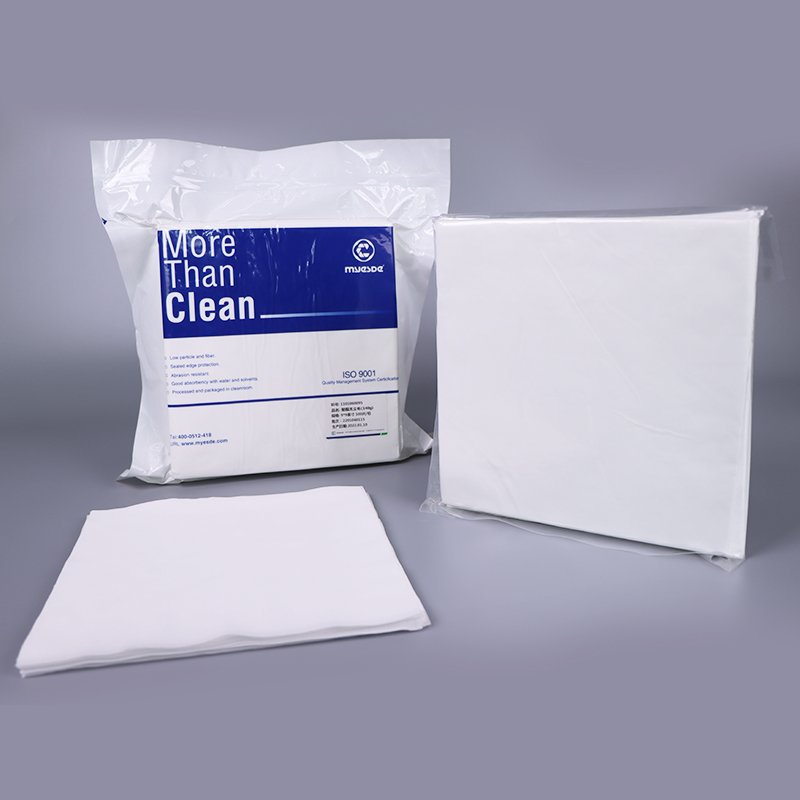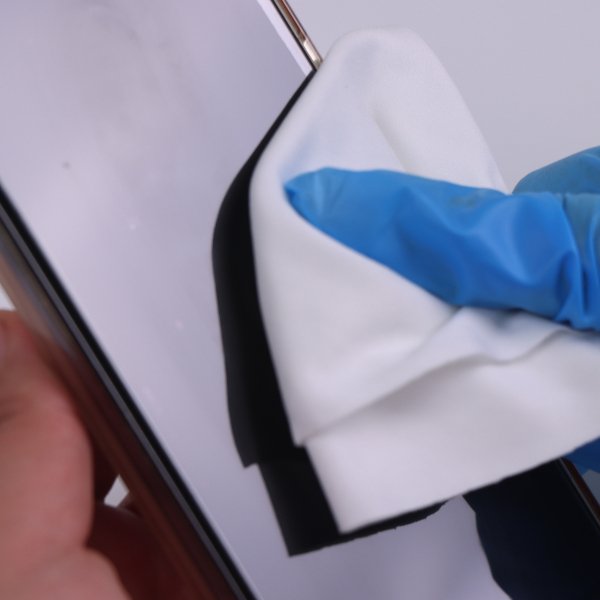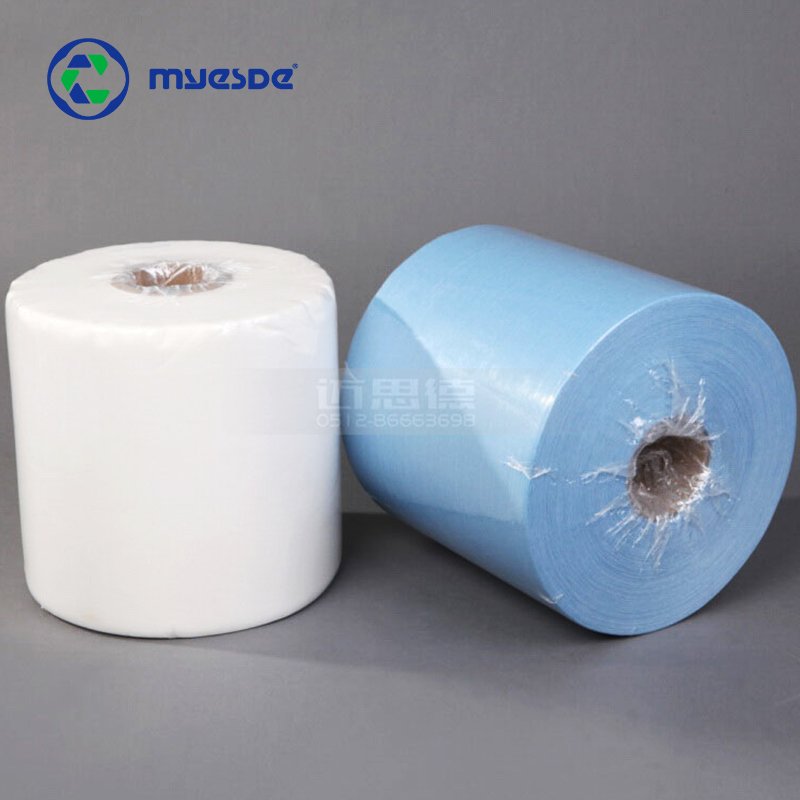In cleanroom operations, wiping isn’t just a routine task — it’s a critical step in contamination control. Whether you’re cleaning surfaces in a pharmaceutical lab, wiping down equipment in a semiconductor fab, or performing final assembly in aerospace, the type of wipe you choose can impact process integrity and compliance. Among the most common choices are pre-saturated wipes and dry nonwoven wipes — but which is right for your environment?
This article takes a deep dive into their differences in composition, performance, use cases, and selection criteria to help you make the best choice for your critical cleaning needs.
Understanding the Basics
Presaturated Wipes
Presaturated wipes are nonwoven wipes that come pre-moistened with a solvent, such as isopropyl alcohol (IPA), ethanol blends, or other approved cleaning solutions. They’re sealed in airtight packaging to prevent evaporation and maintain consistent saturation.
Key Benefits:
-
Ready-to-use, reducing handling time
-
Consistent solvent concentration for process repeatability
-
Better solvent control for compliance and worker safety
Common Applications:
-
Final cleaning before aseptic gowning
-
Sterile prep areas in biopharma
-
Cleanroom maintenance in electronics or optics
Dry Nonwoven Wipes
Dry wipes are packaged without any liquid and must be manually saturated by the operator before use. These are often favored in custom cleaning protocols or when different solvents are rotated or changed based on application.
Key Benefits:
-
Greater flexibility with a solvent choice
-
Lower cost per wipe
-
Longer shelf life and easier storage
Common Applications:
-
Field use where solvents vary
-
Surface prep before coating or bonding
-
Wiping away particulates without moisture
Material Composition and Performance
Presaturated and dry wipes may use similar nonwoven substrates, such as:
-
Spunlace polyester-cellulose: Offers balanced absorbency and strength
-
100% polyester: Low particle generation, ideal for ISO Class 5–7
-
Meltblown polypropylene: Good for solvent retention, but may leave residues
However, their performance can diverge due to the presence or absence of saturation. For example:
| Property | Presaturated Wipes | Dry Wipes |
|---|---|---|
| Particle Control | High, due to reduced dry shedding | Varies based on solvent and application |
| Residue Risk | Low with cleanroom-grade IPA | Depends on the user’s solvent handling |
| Cleaning Consistency | High (fixed formula, fixed volume) | Operator-dependent |
| Time & Efficiency | Faster — ready to use | Requires prep and solvent access |
| Cost per Use | Higher (pre-saturation & packaging) | Lower (bulk packed) |
Contamination Risk and Solvent Control
One of the main advantages of pre-saturated wipes is the consistent delivery of a known quantity and concentration of solvent, which ensures repeatability in critical environments. This is particularly important in regulated industries, such as pharmaceuticals or biotechnology, where validation and documentation are key.
In contrast, dry wipes require the operator to saturate them manually. This introduces variability in solvent volume, which can lead to inconsistent results, residue formation, or surface damage if improperly wetted. While this may be acceptable in general manufacturing or MRO applications, it may not meet cleanroom or GMP expectations.
Sterility and Packaging Considerations
Presaturated wipes used in cleanrooms are often available in sterile packaging (gamma irradiated), ideal for aseptic areas. Their double or triple bagging also supports cleanroom entry protocols.
Dry wipes, on the other hand, are often shipped in bulk bags or folded stacks, offering convenience for high-volume use but may not be compatible with ISO Class 5 or below unless the packaging and production process are validated.
Use Case Examples by Industry
-
Pharmaceutical Cleanroom: A technician performs aseptic surface wipe-down using presaturated 70% IPA/30% DI water wipes with validated endotoxin limits.
-
Semiconductor Manufacturing: A dry polyester wipe is manually saturated with filtered IPA to remove fine particles and flux residue from tools.
-
Medical Device Assembly: Presaturated wipes ensure consistent cleaning of plastic housings before bonding, minimizing solvent exposure variability.
-
Automotive Electronics Workshop: Dry spunlace wipes paired with a degreaser are used in bulk for wiping down enclosures before installation.
Environmental Impact and Waste
Some users prefer dry wipes for sustainability reasons: by controlling how much solvent is used, they can potentially reduce chemical waste. On the other hand, pre-saturated wipes reduce the number of containers and solvent handling steps, which may lower the risk of spills or overuse.
An emerging trend is the development of eco-friendly presaturated wipes with biodegradable substrates and lower VOC solvents, aiming to balance performance and sustainability.
How to Choose
When selecting between presaturated and dry nonwoven wipes, consider the following:
-
Cleanroom Classification: Presaturated wipes are often pre-qualified for lower ISO classes.
-
Process Validation Needs: Consistency matters more in regulated environments.
-
Solvent Control: If multiple chemicals are used, dry wipes may offer better adaptability.
-
Throughput and Labor: Presaturated wipes reduce handling and increase throughput.
-
Budget Constraints: Dry wipes typically have lower upfront costs.
Final Thoughts
There’s no one-size-fits-all answer when it comes to cleanroom wipes. The decision between presaturated and dry nonwoven wipes depends on your application requirements, process controls, and compliance needs. Presaturated wipes are ideal for high-compliance, validated workflows. Dry wipes give flexibility and cost efficiency in lower-risk environments.




-4-1.jpg)